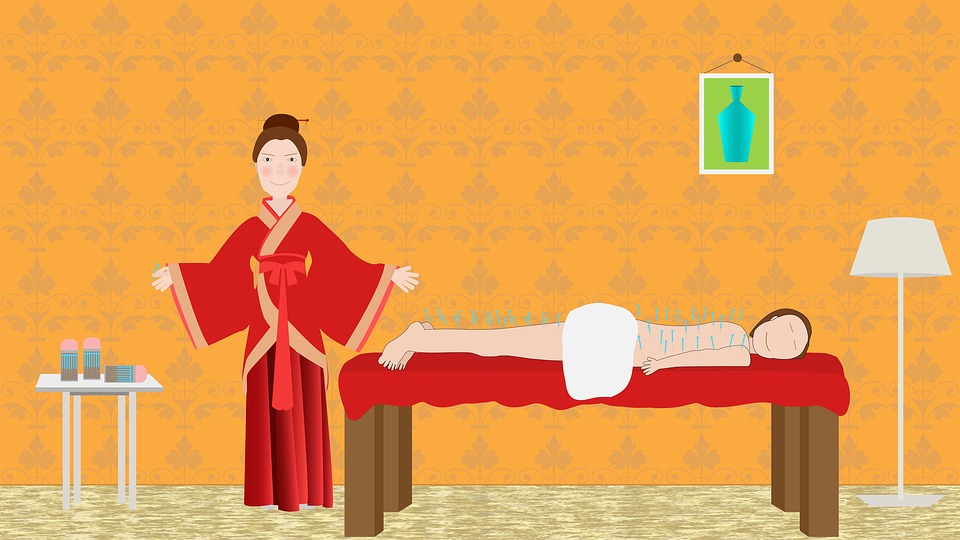Book Appointment Now

Non-Pharmacological Approaches to Pain Relief: Bridging Ancient Techniques with Modern Science
Non-Pharmacological Approaches to Pain Relief represent a growing area of interest in healthcare as alternatives or complements to pharmacological interventions. Pain management has evolved significantly over centuries, with ancient traditions providing a foundation for modern science to validate and refine. Techniques such as acupuncture, meditation, and herbal remedies, once rooted in cultural and spiritual practices, are now supported by scientific evidence and integrated into holistic care models. This essay explores how non-pharmacological approaches blend ancient wisdom with contemporary understanding to address pain’s physical, emotional, and psychological dimensions, ensuring safe and effective relief for patients.
Our nursing experts can deliver 100% custom paper about Non-Pharmacological Approaches to Pain Relief according to your order instructions.
Write my nursing essay
The Historical Roots of Non-Pharmacological Pain Relief
Non-pharmacological pain management has its origins in ancient cultures. Traditional Chinese Medicine (TCM), for instance, has employed acupuncture for over 2,000 years to treat various ailments, including pain. Similarly, Ayurvedic medicine in India utilized herbs, massage, and meditation as part of its holistic approach to health. In the West, ancient Greek and Roman physicians, such as Hippocrates and Galen, recommended techniques like hydrotherapy and therapeutic touch. While these practices were often based on observation and anecdotal evidence, many have endured, evolving alongside modern medical advancements.
Mechanisms of Pain Relief in Non-Pharmacological Approaches
Contemporary research has shed light on the mechanisms underlying many traditional pain relief techniques. Non-pharmacological methods operate through several physiological and psychological pathways:
- Neurochemical Modulation: Techniques like acupuncture and exercise stimulate the release of endogenous opioids, serotonin, and endorphins, natural chemicals that reduce pain perception (Zhao et al., 2017).
- Pain Gate Control: The Gate Control Theory of Pain posits that stimulating large nerve fibers (e.g., through TENS or massage) can inhibit smaller pain fibers, effectively “closing the gate” to pain signals at the spinal cord level (Melzack & Wall, 1965).
- Neuroplasticity: Cognitive approaches such as mindfulness and cognitive-behavioral therapy (CBT) promote adaptive changes in the brain, reducing the emotional and cognitive impact of pain (Zeidan et al., 2016).
- Psychological Modulation: Stress reduction and emotional regulation play a significant role in pain perception. Relaxation techniques and meditation reduce cortisol levels, thereby decreasing pain sensitivity (McEwen, 2017).
Modern Scientific Validation of Ancient Techniques
1. Acupuncture
Rooted in TCM, acupuncture involves the insertion of fine needles into specific points on the body to balance energy, or qi. Modern studies have demonstrated its efficacy in treating chronic pain conditions, including osteoarthritis, migraines, and low back pain. A meta-analysis by Vickers et al. (2018) found that acupuncture significantly outperformed placebo treatments in reducing pain intensity. Mechanistically, acupuncture is believed to activate the hypothalamus and brainstem, stimulating the release of pain-relieving neurochemicals.
2. Meditation and Mindfulness
Meditative practices have been central to spiritual traditions such as Buddhism and Hinduism for millennia. Today, mindfulness-based stress reduction (MBSR) is a widely adopted intervention for chronic pain. Research shows that mindfulness alters pain processing in the brain, reducing activity in areas associated with pain perception, such as the anterior cingulate cortex (Brown & Jones, 2013). Meditation also enhances resilience to pain by fostering acceptance and reducing catastrophizing.
3. Massage Therapy
The therapeutic use of massage dates back to ancient Egyptian, Chinese, and Indian cultures. Massage improves circulation, reduces muscle tension, and stimulates the release of endorphins. A review by Field (2016) highlighted the effectiveness of massage therapy in managing conditions like fibromyalgia, arthritis, and post-surgical pain. Its benefits extend beyond physical relief, promoting relaxation and reducing anxiety associated with chronic pain.
4. Herbal Remedies
Traditional systems like Ayurveda and TCM have long relied on herbs such as turmeric, ginger, and willow bark for pain relief. Modern pharmacological studies have validated their analgesic properties. For instance, curcumin, the active compound in turmeric, has anti-inflammatory effects comparable to NSAIDs without the associated gastrointestinal risks (Hewlings & Kalman, 2017).
Integrating Traditional Techniques into Modern Practice
The integration of ancient techniques into modern healthcare has led to the development of integrative pain management programs, which combine non-pharmacological and pharmacological approaches. For example, hospitals and clinics increasingly offer acupuncture and meditation alongside conventional treatments for chronic pain and post-operative recovery. These programs are particularly valuable in addressing the opioid crisis, providing effective alternatives that reduce dependence on medications.
In palliative care, non-pharmacological methods such as massage and mindfulness enhance quality of life for patients with terminal illnesses. Similarly, rehabilitation programs for musculoskeletal injuries often incorporate yoga and physiotherapy, blending ancient and modern methods to restore function and alleviate pain.
Advantages of Non-Pharmacological Pain Relief
The benefits of non-pharmacological approaches extend beyond pain reduction. They address the holistic needs of patients, promoting physical, emotional, and social well-being. Key advantages include:
- Minimal Side Effects: Unlike pharmacological treatments, which can cause addiction and organ toxicity, most non-pharmacological methods are safe and well-tolerated (Garcia et al., 2020).
- Patient Empowerment: These techniques encourage active participation in pain management, fostering a sense of control and self-efficacy.
- Cost-Effectiveness: Non-pharmacological interventions often reduce healthcare costs by minimizing the need for medications and hospitalizations.
Challenges and Limitations
Despite their benefits, non-pharmacological approaches face several challenges. The variability in individual responses makes it difficult to predict outcomes, and the lack of standardized protocols can limit their widespread adoption. Additionally, access to trained practitioners and the integration of these methods into mainstream healthcare systems remain barriers in many regions. Further research is needed to optimize delivery methods and evaluate the long-term efficacy of these interventions.
Future Directions
Advancements in technology and neuroscience hold promise for expanding the scope of non-pharmacological pain management. Virtual reality (VR), for example, is emerging as a powerful tool for acute pain relief during procedures like wound care and physical therapy (Hoffman et al., 2019). Similarly, wearable devices that deliver electrical stimulation or track biofeedback are making these interventions more accessible and personalized.
Conclusion
Non-pharmacological approaches to pain relief demonstrate the enduring relevance of ancient techniques in modern healthcare. By bridging traditional wisdom with scientific validation, these methods provide holistic, patient-centered alternatives to pharmacological treatments. Techniques such as acupuncture, meditation, massage, and herbal remedies have stood the test of time, offering safe and effective options for managing both acute and chronic pain. As research continues to deepen our understanding of these practices, their integration into mainstream medicine will play a crucial role in advancing pain management and improving quality of life for patients worldwide.
References
- Brown, C. A., & Jones, A. K. (2013). Meditation experience predicts less negative appraisal of pain: A controlled cross-sectional study. Pain, 153(2), 322-331. https://doi.org/10.1016/j.pain.2011.10.027
- Field, T. (2016). Massage therapy research review. Complementary Therapies in Clinical Practice, 24, 19-31. https://doi.org/10.1016/j.ctcp.2016.04.005
- Garcia, M. K., et al. (2020). Integrative medicine for cancer pain management: A systematic review. Supportive Care in Cancer, 28(11), 4941-4954. https://doi.org/10.1007/s00520-020-05664-1
- Hewlings, S., & Kalman, D. (2017). Curcumin: A review of its effects on human health. Foods, 6(10), 92. https://doi.org/10.3390/foods6100092
- Hoffman, H. G., et al. (2019). Virtual reality as an adjunctive non-pharmacologic analgesic for acute burn pain during medical procedures. Annals of Behavioral Medicine, 41(2), 183-191. https://doi.org/10.1007/s12160-010-9248-7
- Melzack, R., & Wall, P. D. (1965). Pain mechanisms: A new theory. Science, 150(3699), 971-979. https://doi.org/10.1126/science.150.3699.971
- McEwen, B. S. (2017). Neurobiological and systemic effects of chronic stress. Dialogues in Clinical Neuroscience, 8(4), 367-381. https://doi.org/10.31887/DCNS.2006.8.4.bmcewen
- Vickers, A. J., et al. (2018). Acupuncture for chronic pain: Update of an individual patient data meta-analysis. Journal of Pain, 19(5), 455-474. https://doi.org/10.1016/j.jpain.2017.11.005
- Zhao, Z. Q., et al. (2017). The effects of acupuncture on chronic pain: Biological mechanisms and clinical research. Journal of Pain Research, 10, 1187-1196. https://doi.org/10.2147/JPR.S138121
- Zeidan, F., et al. (2016). Neural mechanisms supporting the relationship between dispositional mindfulness and pain. Pain, 157(2), 365-375. https://doi.org/10.1097/j.pain.0000000000000417







